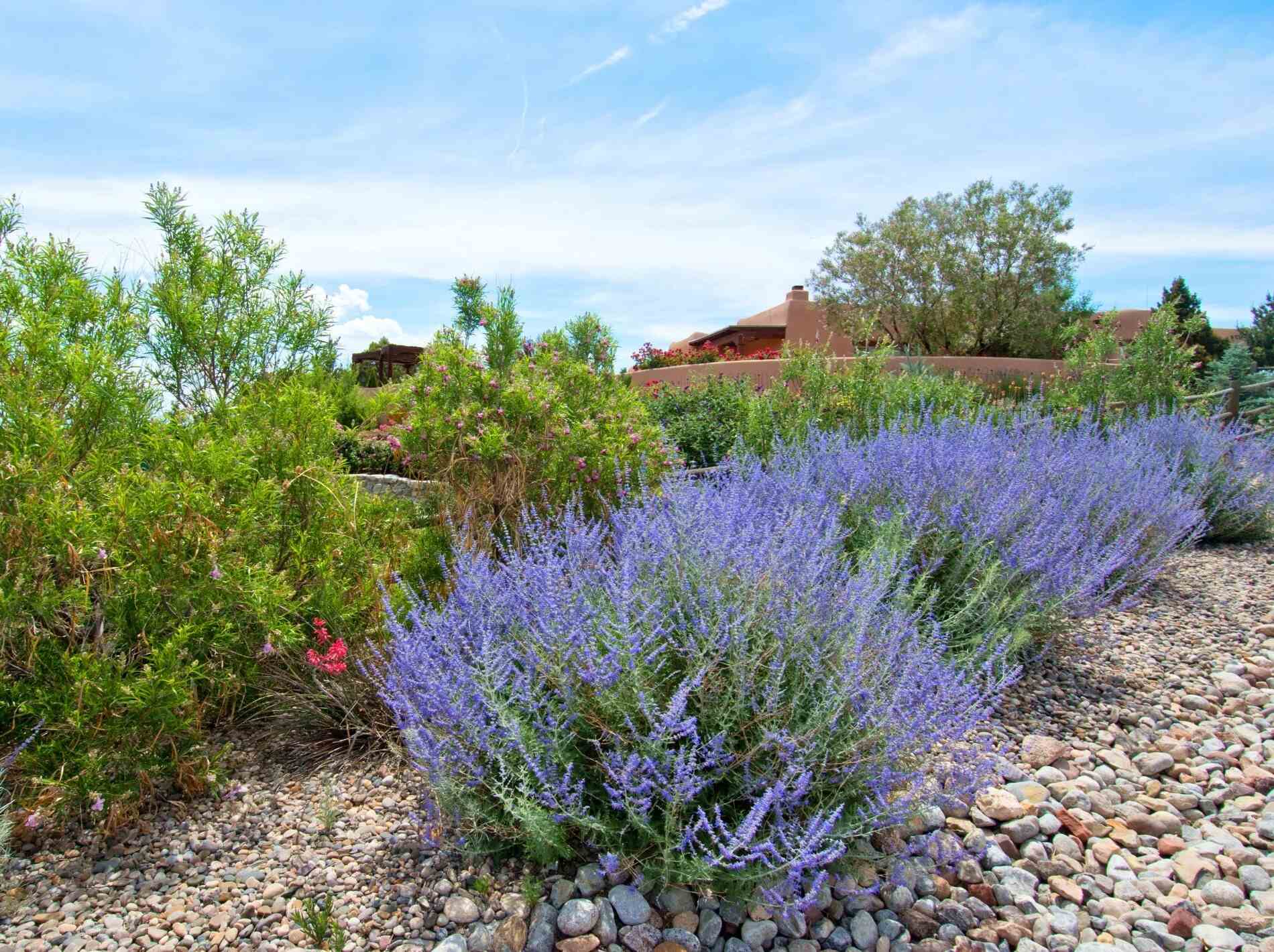
Russian sage is a stunning plant known for its silvery foliage and vibrant purple-blue flowers. But what makes this plant so special? Russian sage is not only beautiful but also incredibly hardy and drought-tolerant. It thrives in full sun and well-drained soil, making it a favorite among gardeners. This perennial can grow up to 5 feet tall, creating a striking presence in any garden. Its aromatic leaves add another layer of appeal, often used in potpourri and herbal remedies. Whether you're a seasoned gardener or a newbie, Russian sage offers a low-maintenance option that brings color and fragrance to your outdoor space. Ready to learn more? Let's dive into 26 fascinating facts about this remarkable plant!
What is Russian Sage?
Russian sage is a popular plant known for its beautiful, aromatic foliage and vibrant purple flowers. It’s a favorite among gardeners for its hardiness and low maintenance. Here are some fascinating facts about this versatile plant.
-
Russian sage, scientifically known as Perovskia atriplicifolia, belongs to the mint family.
-
Despite its name, Russian sage is not native to Russia. It originates from Central Asia.
-
This plant can grow up to 3 to 5 feet tall, making it a striking addition to any garden.
-
Russian sage blooms from mid-summer to late fall, providing long-lasting color.
-
The flowers of Russian sage are a beautiful lavender-blue, attracting bees, butterflies, and other pollinators.
Growing Conditions for Russian Sage
Understanding the ideal growing conditions can help you cultivate a thriving Russian sage plant. Here are some key points to consider.
-
Russian sage thrives in full sun, requiring at least six hours of direct sunlight daily.
-
It prefers well-drained soil and can tolerate poor soil conditions, including sandy and rocky soils.
-
This plant is drought-tolerant once established, making it perfect for xeriscaping.
-
Russian sage is hardy in USDA zones 4 through 9, meaning it can withstand a wide range of temperatures.
-
It’s resistant to deer and rabbits, making it a great choice for gardens in areas with these animals.
Benefits of Russian Sage
Russian sage offers numerous benefits beyond its aesthetic appeal. Here are some reasons why you might want to add it to your garden.
-
The plant’s aromatic leaves can be used in potpourri and sachets.
-
Russian sage has medicinal properties and has been used in traditional medicine to treat various ailments.
-
Its long blooming period provides continuous color in the garden.
-
The plant’s structure adds height and texture to garden designs.
-
Russian sage can be used as a natural insect repellent due to its strong scent.
Caring for Russian Sage
Proper care ensures that your Russian sage remains healthy and vibrant. Here are some tips to keep in mind.
-
Pruning in early spring encourages new growth and maintains the plant’s shape.
-
Avoid overwatering, as Russian sage prefers dry conditions.
-
Mulching around the base can help retain moisture and suppress weeds.
-
Fertilizing is generally unnecessary, but a light application of compost in spring can boost growth.
-
Regularly check for pests and diseases, although Russian sage is relatively pest-free.
Interesting Facts About Russian Sage
Here are some additional interesting tidbits about Russian sage that you might not know.
-
Russian sage was named after the Russian general Vasily Perovsky.
-
The plant’s leaves are gray-green and have a silvery sheen, adding to its visual appeal.
-
Russian sage is often used in landscaping for its ability to create a soft, airy look.
-
It can be propagated by division or from cuttings, making it easy to share with friends.
-
The plant’s stems are woody at the base but become more herbaceous towards the top.
-
Russian sage is not only beautiful but also environmentally friendly, requiring minimal water and care.
Final Thoughts on Russian Sage
Russian sage isn't just a pretty plant. It's a hardy survivor that thrives in tough conditions. This drought-tolerant beauty can handle poor soil and still look stunning. Its silvery foliage and lavender-blue flowers attract pollinators like bees and butterflies, making it a great addition to any garden.
Beyond its looks, Russian sage has medicinal properties. People have used it for centuries to treat fevers and digestive issues. Its aromatic leaves can even be used in potpourri or as a natural insect repellent.
Whether you're a seasoned gardener or just starting out, Russian sage is a fantastic choice. It's low-maintenance, versatile, and beneficial to the environment. So, next time you're planning your garden, consider adding this resilient plant to your landscape. You'll be glad you did.
Was this page helpful?
Our commitment to delivering trustworthy and engaging content is at the heart of what we do. Each fact on our site is contributed by real users like you, bringing a wealth of diverse insights and information. To ensure the highest standards of accuracy and reliability, our dedicated editors meticulously review each submission. This process guarantees that the facts we share are not only fascinating but also credible. Trust in our commitment to quality and authenticity as you explore and learn with us.


